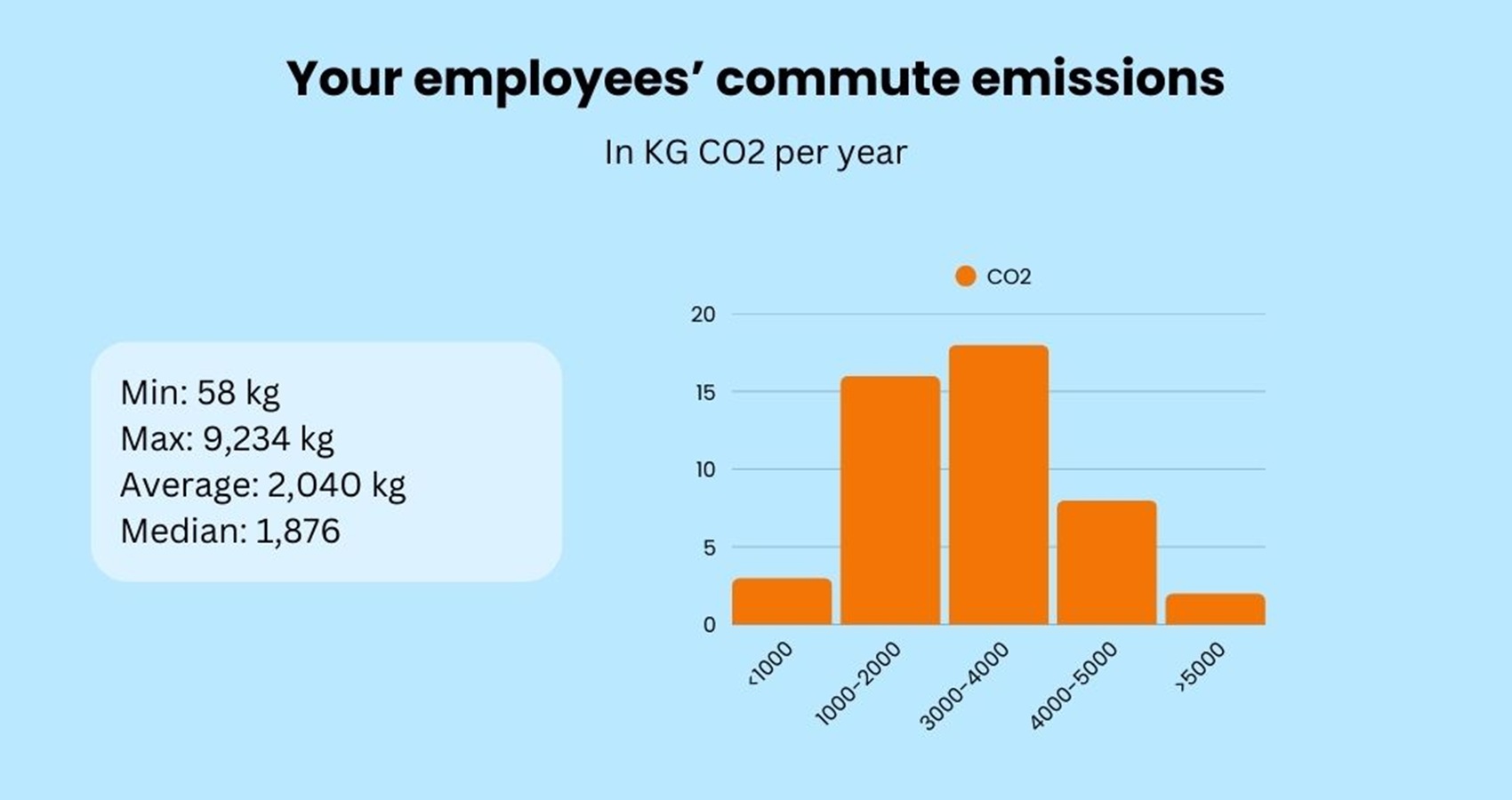




By calculating their personal and professional carbon footprints, employees gain a deeper understanding of their impact on the environment. This personalized approach drives engagement, helps build a sustainable company culture, and strengthens their connection to your company’s ESG efforts.

By calculating their personal and professional carbon footprints, your employees generate valuable insights and data — including for Scope 3 commute emissions. We compile this information into a useful, anonymized format for your ESG reporting.

Running a carbon footprint campaign provides compelling content for internal updates, sustainability reports, and employer branding. Showcasing your company’s commitment to sustainability can enhance corporate reputation and attract environmentally conscious talent.

We provide a ready-to-use solution that integrates seamlessly with your company’s branding and communication channels. With minimal effort on your side, you can launch a tailored awareness campaign that engages employees and supports your sustainability goals.


Your carbon footprint calculator is designed to fit your company’s branding and sustainability goals. It can be hosted on a dedicated webpage or embedded into your systems, ensuring a seamless experience for employees.

Each employee completes the calculator to assess their carbon footprint. They receive a personalized report with insights and actionable tips, helping them understand their impact and how they can contribute to a more sustainable workplace.

You receive anonymized, aggregated data through a close-out report or company dashboard. Gain a clear picture of your company’s employee-related emissions, track participation, and use the insights to strengthen your sustainability strategy.